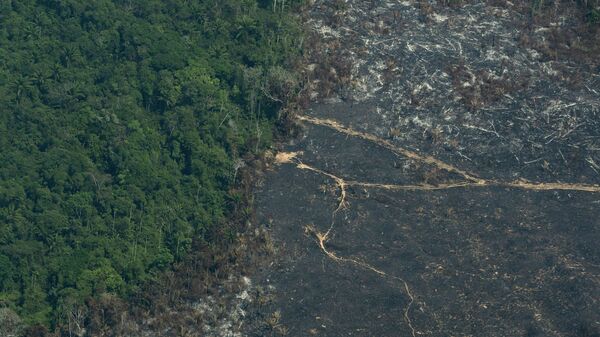A recent report by the Guardian, citing Brazil’s space research agency INPE, revealed that fires in the country’s Amazon have increased by 13% in the first nine months of the year compared to the same period a year ago.
“We have had two months with a lot of fire. It’s already worse than last year,” said Ane Alencar, science director for Brazil’s Amazon Environmental Research Institute, also warning that the situation could worsen if the drought in the country continues.
“This year has been especially bad, and the COVID-19 has had a lot to do with it. A lot of the protection and policing has been eliminated or really diminished … Brazil, especially, [has] been moving in and doing what we call this settler colonialism, where they are taking over areas … especially from Indigenous people, and the more area that they clear, the drier it gets,” Pearson told Political Misfits hosts Michelle Witte and Bob Schlehuber.
“One big difference in the Amazon rainforest from what we’re used to hearing in the US, in Canada, in Europe, is that those forests produce 60, 70, 80, sometimes 95% a year of their own rainfall. So, the more forests are cut down, the less rain you have locally. The less rainfall you have, the drier it gets … It’s a vicious cycle,” he added.
The domestic and international demand for beef has prompted the cattle industry’s expansion into the Amazon, with the cattle herd in the Amazon increasing by almost 200% between 1993 and 2013, a report by Mighty Earth explains. The majority of deforestation in the area is caused by cattle ranchers burning large areas of the rainforest for pasture.
“The economic pressure for cattle farming is probably one of the biggest factors that’s pushing active forest destruction to create grasslands and areas where cattle can be raised,” Pearson explained, calling the meat industry an “economic powerhouse that sees their way to increasing their economics by clearing out more forest.”
“And of course, we are, here in the US and the rest of the world, are not innocent in this too, because our demand for beef is pushing these economics. So, how we consume, even though we never go to the rainforests, is affecting them directly,” Pearson added.
According to Fearnside, many parts of the Amazon have undergone so much deforestation that the rainforests are turning into savannahs: grasslands with scattered trees.
“In those areas, you already have passed the point where just deforestation represents a tipping point,” Fearnside pointed out.



